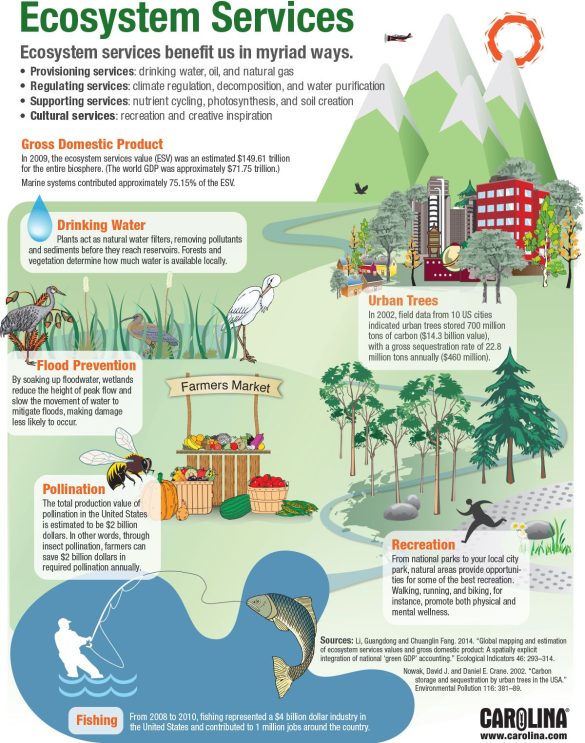The Importance of Biodiversity Hotspots
By: Khayla Bailey
Section 1
Understanding Biodiversity Hotspots
What Are Biodiversity Hotspots?
| 01 Rich Ecosystems Biodiversity hotspots are regions with exceptionally high levels of plant and animal species, making them crucial for the preservation of Earth’s biodiversity. | 02 Threatened Areas These hotspots are also under significant threat due to human activities, highlighting the urgency of conservation efforts in these regions. | 03 Examples of Hotspots Notable examples include the Amazon Rainforest, theCoral Triangle, and the Cape Floristic Region, each with unique and diverse ecosystems. |
Importance of Biodiversity Hotspots
| Ecosystem Services Biodiversity hotspots provide essential ecosystem services such as pollination, water purification, and carbon sequestration, benefiting both local and global environments. | ||
| Genetic Diversity These regions harbor a wealth of genetic diversity, offering potential solutions for agriculture, medicine, and biotechnology. | ||
| Cultural Significance Many indigenous communities rely on biodiversity hotspots for their cultural practices, traditional knowledge, and livelihoods. |
| 01 Habitat Destruction Human activities like deforestation, urbanization, and industrialization pose a significant threat to the integrity of biodiversity hotspots. | 02 Climate Change Impact The effects of climate change, including rising temperatures and extreme weather events, further endanger the delicate balance of these ecosystems. | 03 Invasive Species Introduction of non-native species can disrupt the natural equilibrium of biodiversity hotspots, leading to the decline of native flora and fauna. |
| Protected Areas Establishing and maintaining protected areas within biodiversity hotspots is crucial for safeguarding the unique species and ecosystems. |
| Community Involvement Engaging local communities in conservation efforts fosters a sense of ownership and ensures sustainable management of these critical regions. |
| Research and Monitoring Continuous scientific research and monitoring help in understanding the dynamics of biodiversity hotspots and formulating effective conservation strategies. |
Section 2
Benefits of Biodiversity Hotspots
Ecosystem Resilience
| 01 Adaptation and Resilience Biodiversity hotspots contribute to the resilience of ecosystems, enabling them to adapt to environmental changes and disturbances. | 02 Natural Resource Management The diverse array of species in these hotspots aids in natural resource management, providing stability to ecosystems and human societies. | 03 Climate Regulation The presence of various species in hotspots plays a vital role in regulating climate patterns and mitigating the impacts of climate change. |
Economic Value
Eco-tourism Opportunities – Biodiversity hotspots attract eco-tourism, offering economic opportunities for local communities and contributing to sustainable development.
Pharmaceutical Discoveries – Many medicinal breakthroughs originate from the unique flora and fauna found in biodiversity hotspots, holding immense economic potential.
Sustainable Agriculture – Genetic resources from these regions enhance agricultural productivity and contribute to the development of resilient crop varieties.
Human Well-being
| 01 Food Security Biodiversity hotspots support food security by providing a rich diversity of crops, wild foods, and marine resources. | 02 Cultural Enrichment The cultural and spiritual significance of biodiversity hotspots enriches human well-being, connecting communities to their natural heritage. | 03 Health Benefits Medicinal plants and traditional remedies from these regions contribute to the well-being and healthcare practices of diverse populations. |
Global Impact
Carbon Sequestration – Biodiversity hotspots play a crucial role in sequestering carbon, aiding in the mitigation of climate change and its associated impacts.
Biodiversity Conservation – Protecting hotspots is vital for preserving global biodiversity, ensuring the continuity of life-supporting ecosystems.
International Collaboration – Conservation efforts in these regions foster international cooperation, promoting shared responsibility for the protection of Earth’s natural heritage.
Section 3
Conservation Efforts and Future Outlook
Collaborative Initiatives
| 01 International Agreements Collaborative agreements and conventions, such as the Convention on Biological Diversity, facilitate coordinated action for biodiversity hotspot conservation. | 02 Public-Private Partnerships Engaging private enterprises in conservation initiatives brings additional resources and expertise to support long-term preservation efforts. | 03 NGO Contributions Non-governmental organizations play a pivotal roleinraising awareness, funding projects, andi mpl ementi ng on-ground conservation programs. |
Technological Innovations
| 01 Remote Sensing Technologies Advanced technologies like satellite imagery and remote sensing aid in monitoring changes in biodiversity hotspots and assessing conservation needs. | 02 Data-driven Conservation Big data analytics and AI tools provide insights into ecosystem dynamics, species distribution, and emerging conservation challenges. | 03 Public Engagement Platforms Interactive digital platforms and mobile apps engage the public in citizen science, fostering a global community dedicated to biodiversity conservati on. |
Sustainable Development Goals
| 01 Alignment with SDGs Conservation efforts in biodiversity hotspots contribute to several sustainable Development Goals, including those related to climate action, life on land, and partnerships for the goals. | 02 Inclusive Conservation Ensuring the inclusion of local communities and indigenous peoples in conservation planning aligns with the principles of sustainable and equitable development. | 03 Measuring Impact Establishing clear metrics and indicators helps in tracking the progress of conservation efforts and evaluating their impact on biodiversity and human well-being. |
Future Prospects
| 01 Resilience Building Adapting conservation strategies to address emerging threats and changes in biodiversity hotspots is essential for their long-term sustainability. 02 Education and Awareness Investing in education and awareness campaigns fosters a sense of responsibility and stewardship towards biodiversity hotspots among global citizens. 03 Policy Advocacy Advocating for policies that prioritize biodiversity conservation and sustainable land use is crucial for securing the future of these invaluable ecosystems. |
https://ourworldindata.org/biodiversity
https://bdj.pensoft.net/articles


